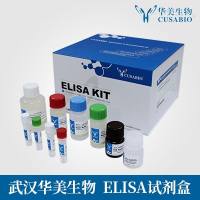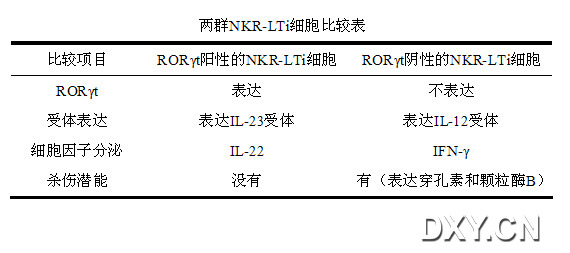【进展|热点】TLR1/TLR2 Agonist Induces Tumor Regression by Reciprocal Modulation of Effector and Regulator
丁香园论坛
777
JI:淋巴细胞的“杀癌”和“护癌”机制研究有新突破
近日,复旦大学上海医学院免疫学系储以微教授课题组经3年潜心研究发现,有一种从细菌中提取的名叫“BLP”的细菌脂蛋白,一旦与存在于T淋巴细胞表面的TLR-2受体“一对一配接”后,可以调动一群具有杀伤性T淋巴细胞明显增强其杀伤癌细胞的能力,同时,这种“一对一配接”还可以削弱和抑制另外一群调节性T淋巴细胞“保护癌细胞”的能力。这一新发现为恶性肿瘤治疗提供的传统放化疗法以外的副作用更小、专一性更强、更有效的免疫“生物治疗”奠定了坚实的基础。”
T淋巴细胞是一种免疫细胞,在罹患恶性肿瘤时,它们中有的会发挥作用,奋力杀伤肿瘤细胞,但是,也有的T淋巴细胞非但不去杀伤肿瘤细胞,并且还会阻止其他淋巴细胞杀伤癌细胞。因此,如何调动“良性”杀伤性T淋巴细胞勇猛杀“癌”的积极性,并有效抑制“恶性”调节性T淋巴细胞的破坏作用,一直是国内外医学界科学家希望探索的“奥秘”。
储以微教授课题组经研究发现,“BLP” 细菌脂蛋白与存在于T淋巴细胞表面的TLR-2受体“一对一配接”后,会在两群T淋巴细胞中诱导两条不同的信号。对“良性”的杀伤性T淋巴细胞来说,激发了正向的信号通路,而对“恶性”的调节性T淋巴细胞来说,则激发了负向信号通路,最终导致不同的效应。相关深层次机制研究正在进行中。
上述成果已发表在最新一期的免疫学专业权威杂志 Journal of Immunology 上,并被美国哈佛大学和英国剑桥大学等顶尖专家组成的国际权威机构的在线科研评价系统“Faculty of 1000” 推荐为“必读成果”。Faculty of 1000对该研究给予高度评价:“这一有趣的研究表明,‘BLP’ 细菌脂蛋白发挥抗肿瘤效应,不是通过直接作用于固有免疫系统或抗原提呈细胞,而是通过抑制调节性T淋巴细胞功能,进而促进杀伤性T淋巴细胞的活性。该研究成果为转化医学及免疫‘生物治疗’奠定了坚实的基础。
The Journal of Immunology doi: 10.4049/jimmunol.1002320
TLR1/TLR2 Agonist Induces Tumor Regression by Reciprocal Modulation of Effector and Regulatory T Cells
Yi Zhanundefined,1, Feifei Luundefined,1, Yuchan Caundefined, Nan Liundefined, Luman Wanundefined, Damo Xu? and Yiwei Chundefined
Abstract
Using TLR agonists in cancer treatment can have either beneficial or detrimental effects. Therefore, it is important to determine their effect on the tumor growth and understand the underlying mechanisms in animal tumor models. In this study, we report a general immunotherapeutic activity of a synthetic bacterial lipoprotein (BLP), a TLR1/TLR2 agonist, on established lung carcinoma, leukemia, and melanoma in mice. Systemic treatment of 3LL tumor-bearing mice with BLP, but not LPS, led to a dose-dependent tumor regression and a long-lasting protective response against tumor rechallenge. The BLP-mediated tumor remission was neither mediated by a direct tumoricidal activity nor by innate immune cells, because it lacked therapeutic effect in immunodeficient SCID mice. Instead, BLP treatment reduced the suppressive function of Foxp3+ regulatory T cells (Tregs) and enhanced the cytotoxicity of tumor-specific CTL in vitro and in vivo. Furthermore, adoptive cotransfer of BLP-pretreated but not untreated CTL and Tregs from wild-type but not from TLR2?/? mice was sufficient to restore antitumor immunity in SCID mice by reciprocally modulating Treg and CTL function. These results demonstrate that the TLR1/TLR2 agonist BLP may have a general tumor therapeutic property involving reciprocal downregulation of Treg and upregulation of CTL function. This property may play an important role in the development of novel antitumor strategies.
近日,复旦大学上海医学院免疫学系储以微教授课题组经3年潜心研究发现,有一种从细菌中提取的名叫“BLP”的细菌脂蛋白,一旦与存在于T淋巴细胞表面的TLR-2受体“一对一配接”后,可以调动一群具有杀伤性T淋巴细胞明显增强其杀伤癌细胞的能力,同时,这种“一对一配接”还可以削弱和抑制另外一群调节性T淋巴细胞“保护癌细胞”的能力。这一新发现为恶性肿瘤治疗提供的传统放化疗法以外的副作用更小、专一性更强、更有效的免疫“生物治疗”奠定了坚实的基础。”
T淋巴细胞是一种免疫细胞,在罹患恶性肿瘤时,它们中有的会发挥作用,奋力杀伤肿瘤细胞,但是,也有的T淋巴细胞非但不去杀伤肿瘤细胞,并且还会阻止其他淋巴细胞杀伤癌细胞。因此,如何调动“良性”杀伤性T淋巴细胞勇猛杀“癌”的积极性,并有效抑制“恶性”调节性T淋巴细胞的破坏作用,一直是国内外医学界科学家希望探索的“奥秘”。
储以微教授课题组经研究发现,“BLP” 细菌脂蛋白与存在于T淋巴细胞表面的TLR-2受体“一对一配接”后,会在两群T淋巴细胞中诱导两条不同的信号。对“良性”的杀伤性T淋巴细胞来说,激发了正向的信号通路,而对“恶性”的调节性T淋巴细胞来说,则激发了负向信号通路,最终导致不同的效应。相关深层次机制研究正在进行中。
上述成果已发表在最新一期的免疫学专业权威杂志 Journal of Immunology 上,并被美国哈佛大学和英国剑桥大学等顶尖专家组成的国际权威机构的在线科研评价系统“Faculty of 1000” 推荐为“必读成果”。Faculty of 1000对该研究给予高度评价:“这一有趣的研究表明,‘BLP’ 细菌脂蛋白发挥抗肿瘤效应,不是通过直接作用于固有免疫系统或抗原提呈细胞,而是通过抑制调节性T淋巴细胞功能,进而促进杀伤性T淋巴细胞的活性。该研究成果为转化医学及免疫‘生物治疗’奠定了坚实的基础。
The Journal of Immunology doi: 10.4049/jimmunol.1002320
TLR1/TLR2 Agonist Induces Tumor Regression by Reciprocal Modulation of Effector and Regulatory T Cells
Yi Zhanundefined,1, Feifei Luundefined,1, Yuchan Caundefined, Nan Liundefined, Luman Wanundefined, Damo Xu? and Yiwei Chundefined
Abstract
Using TLR agonists in cancer treatment can have either beneficial or detrimental effects. Therefore, it is important to determine their effect on the tumor growth and understand the underlying mechanisms in animal tumor models. In this study, we report a general immunotherapeutic activity of a synthetic bacterial lipoprotein (BLP), a TLR1/TLR2 agonist, on established lung carcinoma, leukemia, and melanoma in mice. Systemic treatment of 3LL tumor-bearing mice with BLP, but not LPS, led to a dose-dependent tumor regression and a long-lasting protective response against tumor rechallenge. The BLP-mediated tumor remission was neither mediated by a direct tumoricidal activity nor by innate immune cells, because it lacked therapeutic effect in immunodeficient SCID mice. Instead, BLP treatment reduced the suppressive function of Foxp3+ regulatory T cells (Tregs) and enhanced the cytotoxicity of tumor-specific CTL in vitro and in vivo. Furthermore, adoptive cotransfer of BLP-pretreated but not untreated CTL and Tregs from wild-type but not from TLR2?/? mice was sufficient to restore antitumor immunity in SCID mice by reciprocally modulating Treg and CTL function. These results demonstrate that the TLR1/TLR2 agonist BLP may have a general tumor therapeutic property involving reciprocal downregulation of Treg and upregulation of CTL function. This property may play an important role in the development of novel antitumor strategies.







